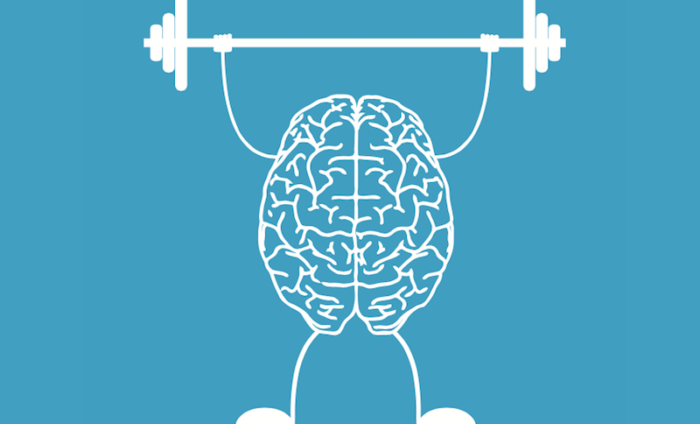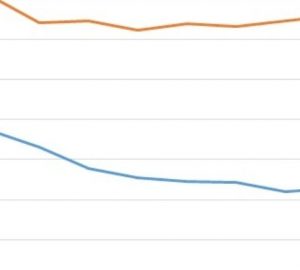
Total Immersion: what is neural training and why do we do it?
Total Immersion founder and head coach Terry Laughlin looks at the principles and protocols of training your brain and presents a sample set to get you started on making your training neurally orientated
This is the first instalment of a monthly series on Mind-Body Training. By mind-body, we mean training that strengthens the connection between your brain and muscles. It’s also intended to increase your efficiency, in part by stimulating your brain to work harder as you swim. When your brain takes on more challenging tasks, the less your body must do to accomplish any goal. One advantage, among many, is that, though it runs on the same fuel – oxygen and glycogen – the brain is far more immune than your muscles to fatigue-related failure.
And if you’re interested in aging gracefully, exercise is as good for the brain as for the body. The most valuable workout is one that works brain and body in equal measure. Mind-body training is simply unmatched in improving the outcomes and enjoyment from training.
Let’s begin by comparing two definitions of endurance. The traditional definition is: “Work harder, longer to create aerobic adaptations that allow you to… work harder, longer.” Traditional training seldom emphasises efficiency or economy – in movement or use of scarce energy resources.
Total Immersion defines swimming endurance as “the ability to repeat effective strokes for a duration and pace of your choosing.” We believe that highly effective training should also embrace three additional goals:
- Create adaptations specific to the goal you’ve set. These adaptations should include skill, pace and energy management;
- ‘Lowest Effective Dose’: How can we achieve the greatest outcome on the least training?
- Improve your self-knowledge — the most valuable and enduring outcome of all.
One type of training achieves all of these goals: Neural Training. In this form of training, you target adaptations to brain and nervous system. As you do, aerobic training still occurs… but is precisely matched to the demands of the task to which your brain and nervous system are adapted.
Training for the 21st century
Aerobic training is based on research conducted between the 1940s and 1970s on how the body metabolizes oxygen and glycogen into musle fuel, and eliminates waste products – dependent on work intensity and duration. It essentially treats the body as a complex chemistry set.
This research – and the training based on it – seldom looked at efficiency measures; though some researchers noted that more efficient athletes expended far less energy. The core elements of aerobic system training – how far to swim, at what speed, and on what rest interval – have remained essentially unchanged over the last 50 years.
The possibility of neural-oriented training first received mention during the 1980s: in 1988 I heard my mentor Bill Boomer say that “conditioning should be ‘something that happens’ while you work on skills.” But it was the development, in the first decade of this century, of advanced tools for observation of changes to brain structures – fMRI and PET scans – that permitted research which led to far sharper definition of neural training protocols.
Rationale for neural training
- Swimming is a skill-oriented activity. According to Mike Joyner MD, director of human performance research at the Mayo Clinic, at the elite level, swim performance is determined 75% by skill – how efficiently or economically we use energy resources; at the novice to intermediate level, Mike estimates the contribution of skill to performance at closer to 90%.
- Energy is an incredibly precious resource. In 2005, while designing a swim foil for the Navy Seals, engineers at DARPA – the Pentagon’s research arm – estimated the energy efficiency of uncoached swimmers at just 3%. Elite swimmers convert just 10% of energy into forward motion. Even the amazing Katie Ledecky diverts 90% of her energy into moving water around and other forms of waste! Thus the most sensible and logical focus of training is to reduce energy waste, rather than continually “top up” a seriously leaky tank of muscle fuel.
- Speed is not just a product of how hard you work or how fast you stroke. Rather it’s a mathematically specific equation: Velocity = Stroke Length x Stroke Rate, or V=SL x SR. Stroke Length – and your ability to maintain it while increasing Stroke Rate – is an exacting skill that is developed only by training that creates adaptations in the brain and nervous system.
Benefits of neural training
- Converts generic workouts into precise and personalized training. Minimises wasted time and effort (ie, Least Effective Dose). Maximises sense of engagement and purpose.
- Completely transparent and measurable. While working toward aerobic development, you never know how much you’ve achieved, nor when you have ‘enough.’ Nervous system training employs simple metrics that let you know exactly how you are progressing. You focus on incremental, measurable week-by-week progress in those metrics.
- Can occur at lightning speed. While significant change in aerobic-system capacity takes months, measurable adaptations of brain and nervous system to well-designed tasks can sometimes occur in as little as 20 to 30 minutes.
Protocols of neural training
Always focus on improvement. The goal of any training session is never to ‘get the yards/metres in,’ or get your heart rate up. Rather it’s to be a better swimmer at the end of the session.
Set up feedback loops to measure your improvement. In traditional training, the sole measure of performance is time. In mind-body training, time is but one of several revealing measures. The others include SPL or strokes per length (the simplest measure of Stroke Length); Tempo – another term for Stroke Rate (measured with precision by a Tempo Trainer). To have complete information on how you performed during a swim or set, you need to employ at least two measures – eg, SPL + Time; Tempo + SPL; Tempo + Time. It may seem complicated, but with practice it quickly becomes second nature.
During a set, focus on finding the easiest way to perform a task or achieve a goal – rather than on testing how hard you can work. Remember, the biggest payoff from training is in finding ways to reduce energy waste – not increasing your ability to produce energy.
Sample neural training set
Each article in this series will present a sample set. Each will illuminate a different aspect of how to make training neurally-oriented. We’ll start with the simplest form – one with great potential to reduce energy waste.
After a brief warmup, swim a short ‘benchmark’ set of 3 x 50m. Count strokes and make a note of your time. Add stroke count to seconds for a SWAM Score. For example, 45 strokes + 50 seconds equals a score of 95.
Swim several series of 4 to 8 x Focal Point single lengths. On these, your task is to devote your entire attention to a single, narrow aspect of technique (see below for suggestions). After each length, assess both how close you came
to the feeling described and the quality of your attention (ie, make your mind work as hard as your muscles). Between each length, take a mental reset. Swim the first 5 to 6 strokes of each length without breathing to gain a better feel for each focal point.
Focal points
- Create a weightless, neutral head position. Release your head’s weight entirely to be supported by the water. Then check that head-spine line is arrow-straight.
- As you enter your hand, cut a ‘hole’ in the surface. Forearm should follow hand through that hole. Entry should feel shorter and steeper than normal. Eliminate noise, bubbles and splash.
- Kick as little as possible. Feel that legs ‘draft behind’ upper torso.
After completing the Focal Point series, choose your favorite Focal Point, or sensation – or try to blend two or more. Repeat the benchmark set of 3 x 50m. Your goal is to match, or improve, your score, while expending less effort.
Terry Laughlin is founder and head coach of Total Immersion and winner of six national masters championships since turning 55. The Total Immersion 2.0 Freestyle Mastery Self-Coaching Course teaches ‘Expert’ Pacing/Tempo Training and three other Mastery skills for freestyle.
Find out more at totalimmersion.net and totalimmersion.co.uk







